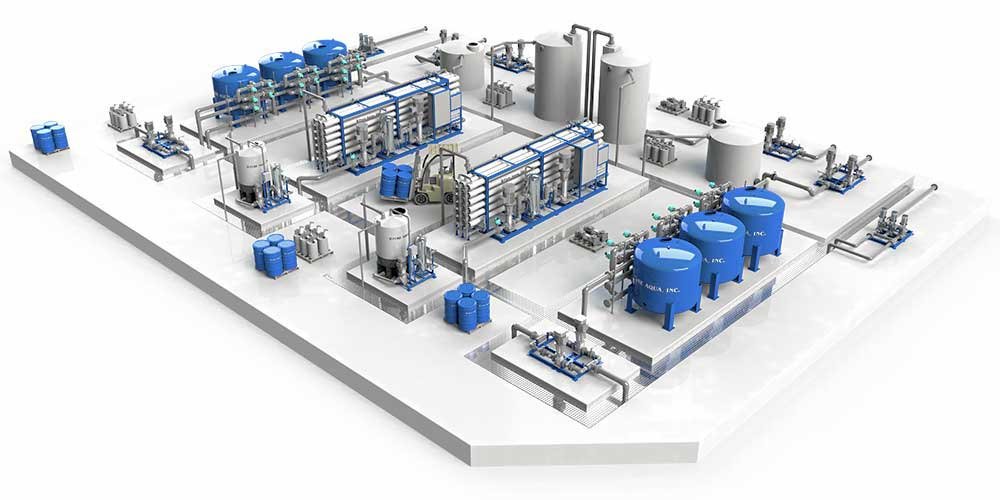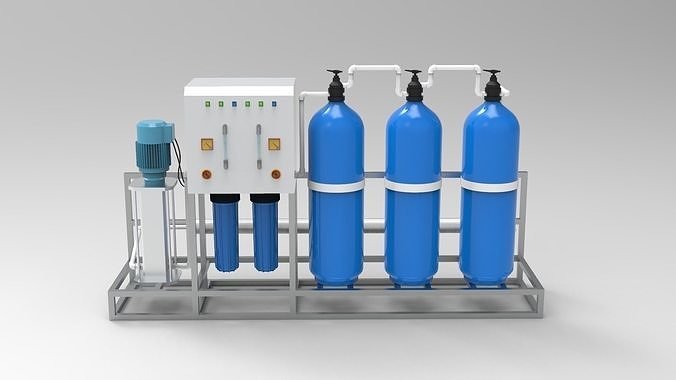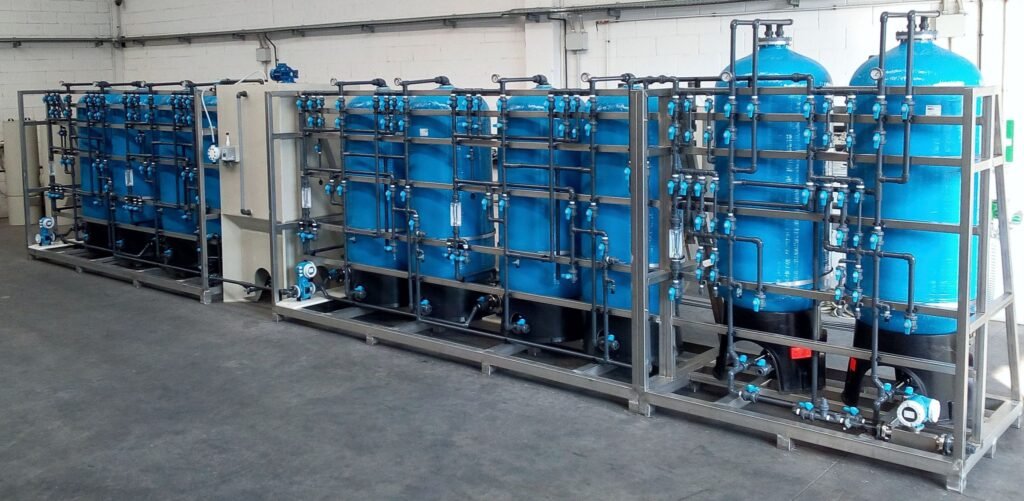Our Demineralization Plant service offers a comprehensive solution for producing ultra-pure water by removing dissolved minerals and salts through a sophisticated ion exchange process.
Process Overview:
Demineralization, also known as deionization, involves passing water through resin beds that contain ion exchange resins. These resins are charged with hydrogen (H⁺) and hydroxide (OH⁻) ions, which replace the cations and anions in the water, such as calcium, magnesium, sodium, chloride, sulfate, and bicarbonate. The exchange results in the formation of pure water molecules (H₂O), with the removed ions being exchanged onto the resin.
Details:
Two-Bed Demineralization: The water initially travels through a cation exchange resin, which replaces positive ions (cations) such as calcium and magnesium with hydrogen ions. It next passes through an anion exchange resin, where negative ions (anions) such as chloride and sulfate are replaced by hydroxide ions. The hydrogen and hydroxide ions unite to create pure water.
Mixed-Bed Demineralization: For even higher purity, mixed-bed demineralization is utilized, which combines cation and anion resins in a single column. This procedure is frequently used as a last cleaning step to produce ultra-low conductivity water.
Regeneration: Over time, ion exchange resins get saturated with undesirable ions and must be renewed. This method involves flushing the resins with strong acids and bases to restore their ion exchange capacity, resulting in consistent water quality.




